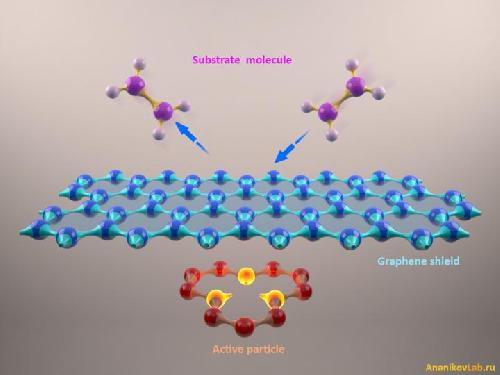Joint theoretical and experimental study suggested that graphene sheets efficiently shield chemical interactions. One of the promising applications of this phenomenon is associated with im-proving quality of 2D materials by "de-charging" of charged defect centers on the surface of carbon materials. Another important feature is the ability to control selectivity and activity of the supported metallic catalysts M/C on the carbon substrate.
Researchers studied carbon materials with defects on the surface (such defects represent an active species, which should be shielded). Indeed, the experiments demonstrated that the defects areas are quite reactive and, as one may expect, defect sites retain high activity towards various molecules. However, as soon as the defects were covered with few layers of graphene flakes, the distribution of reactive centers became uniform (without localized reactivity centers typical for de-fect areas). In other words, covering of the surface defects with graphene layers has decreased the influence of charged defects and made them "invisible" in terms of chemical interactions at the mo-lecular level.
 This image shows a graphene layer as an effective chemical shield, which regulates the level of molecular interactions. Credit: AnanikovLab
This image shows a graphene layer as an effective chemical shield, which regulates the level of molecular interactions. Credit: AnanikovLab
source: Institute of Organic Chemistry, Russian Academy of Sciences